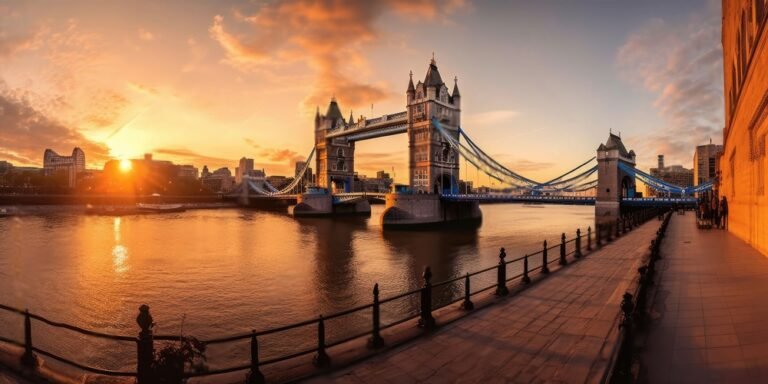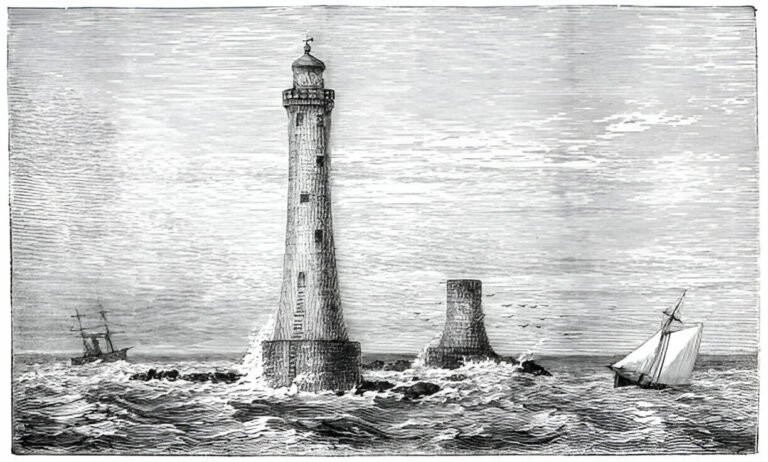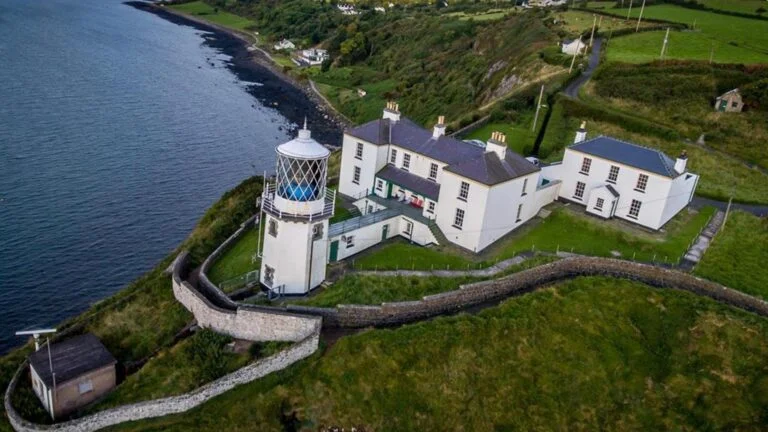How deep is the Thames river: Everything You Need to Know
The River Thames, a picturesque watercourse winding through England, is a defining emblem of the country. This piece explores the depths of the Thames, from its source to its journey to the sea. Tourists come and take a boat trip to feel this historical river. It also addresses questions about the river’s width and depth in feet.
Table of Contents:
- The Humble Beginnings of the Thames
- From Trickle to River: The Thames Gains Strength
- London Calling: The Heart of the Thames
- How Deep is the River Thames in London? A Tale of Two Cities
- Beyond London: The Broader Thames and the Estuary
- How Wide is the River Thames? A River of Contrasts
- The Intricate Dance of Depth and Width: A Balancing Act
- The Ever-Changing Thames: A River Full of Surprises
- A River Rich in History and Ecology
- Conservation Efforts: Safeguarding the Depths of the Thames
- The Future of the Thames: A River for Generations to Come
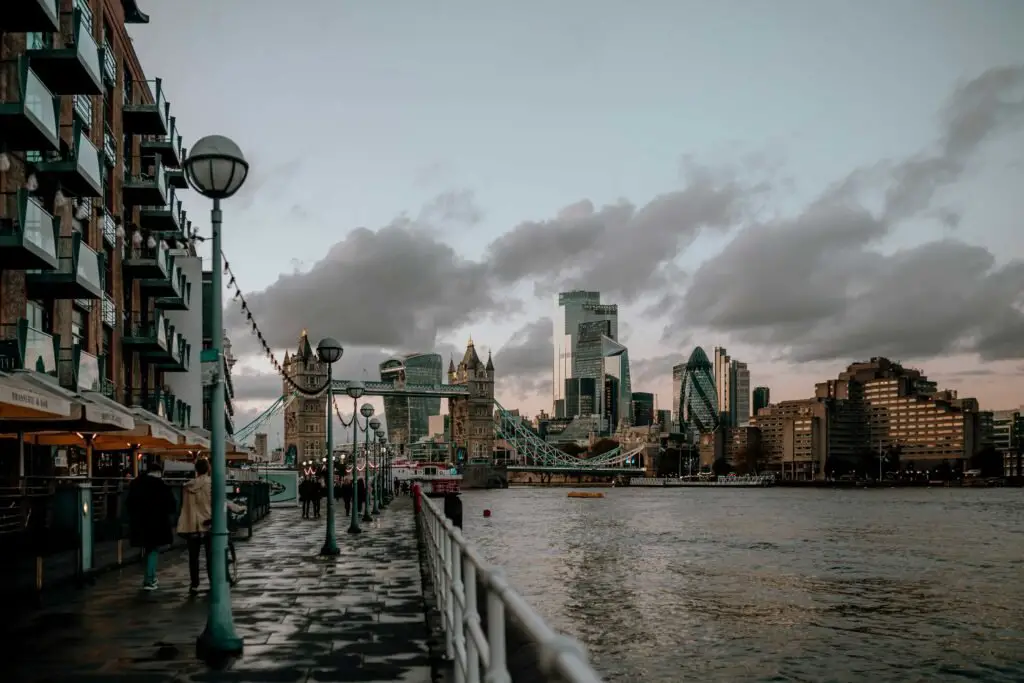
The Humble Beginnings of the Thames
The Thames has a humble beginning. Instead of starting in large glaciers like other majestic rivers, it starts as a small stream near the village of Kemble in the Cotswolds. This area is famous for its beautiful green hills. At this point, the river is called the “Thames Head,” a small stream compared to its powerful flow downstream.
From Trickle to River: The Thames Gains Strength
As it travels south, the Thames collects water from various streams and tributaries. The River Coln, the River Leach, and the River Windrush are some of the contributors to its growing size. Upon reaching Oxford, the Thames becomes more than just a small stream, earning the name the Isis. This stretch of the river is famous for punting, a leisurely activity involving flat-bottomed boats propelled by poles.
London Calling: The Heart of the Thames
London’s River Thames is at its best in the city. It becomes a lively waterway, bustling with activity. Tower Bridge and famous landmarks such as the Houses of Parliament and the London Eye proudly adorn its banks. The Port of London, once a center of global trade, continues to thrive, showcasing the river’s historical and economic significance.
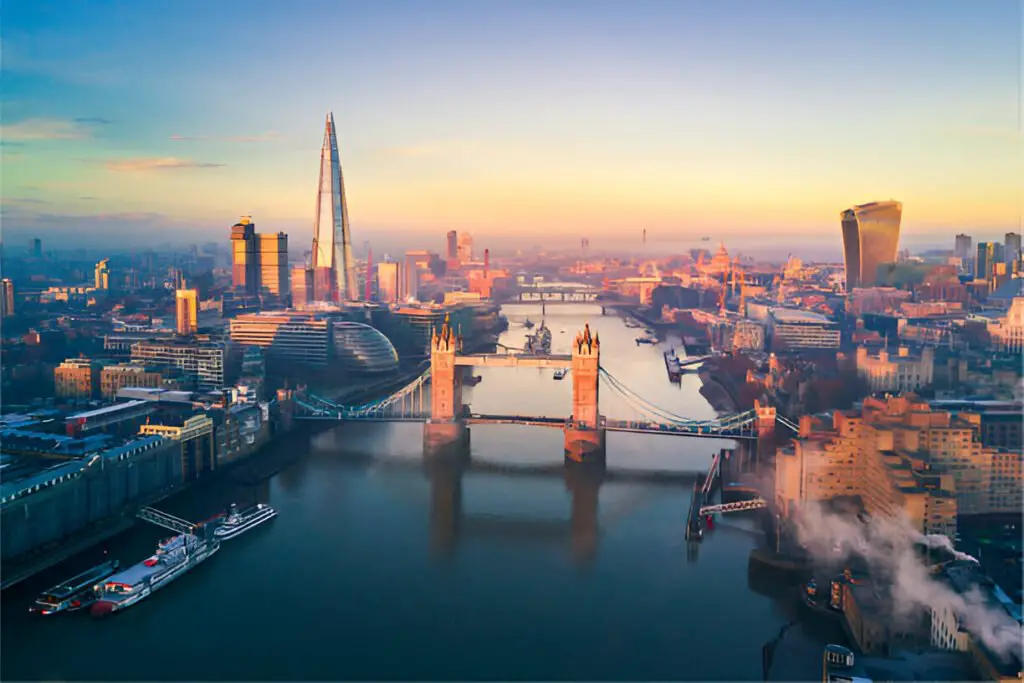
How Deep is the River Thames in London? A Tale of Two Cities
The depth of the Thames in London varies considerably. The Thames in central London is surprisingly shallow compared to other rivers. For example, at London Bridge, the depth is only about 1.5 meters (5 feet). This is because of the tidal influence, which makes the water level change during the day. High tide brings deeper water, while low tide exposes the riverbed in certain spots.
Beyond London: The Broader Thames and the Estuary
As the Thames moves eastward, it widens after departing London. It transforms into a broad estuary where freshwater and saltwater blend from the North Sea. The riverbed deepens notably in this part, with an estimated maximum depth of about 20 meters (66 feet).
How Wide is the River Thames? A River of Contrasts
The width of the Thames is just as fascinating as its depth. In the heart of London, the river is quite narrow, measuring from about 250 meters (820 feet) at Teddington to 750 meters (2,460 feet) at London Bridge. But as the river flows towards the sea, it widens significantly. The Thames estuary expands to a massive 18 kilometers (11 miles) wide, turning into a large body of water before meeting the North Sea.


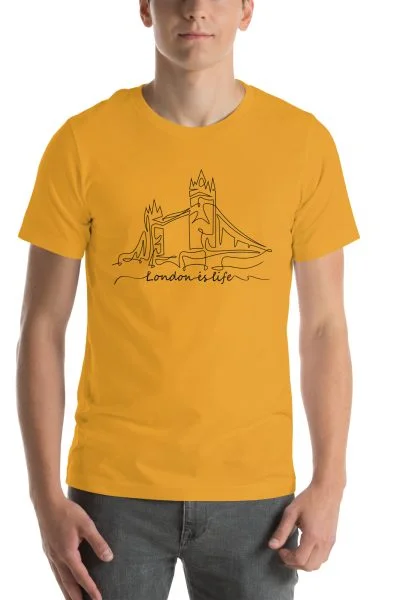

Buy this cool T-shirt
The Intricate Dance of Depth and Width: A Balancing Act
The depth and width of the Thames are intertwined. While a wider riverbed typically results in greater depth, this isn’t always true. In central London, the river channel is narrow and shallow due to frequent dredging for shipping. On the other hand, the wider estuary permits a larger volume of water, leading to increased depth in specific areas.
The Ever-Changing Thames: A River Full of Surprises
The depth of the Thames is always changing because it is affected by tides, rainfall, and human activity. When it rains a lot, the river gets deeper. But when it’s dry, the water level goes down and we can see more of the riverbed. The tides also make a difference, with high tide making the water deeper and low tide showing the shallow parts of the river.
A River Rich in History and Ecology
The different depths of the Thames have had a big impact on its history and nature. The shallow parts in London were good for early settlements and helped with trade. The deeper parts of the estuary allowed big ships to sail through, making the Thames important for business. The riverbed is also home to many different types of aquatic life, with different species living in different depths and water flow.
Conservation Efforts: Safeguarding the Depths of the Thames
Pollution from urban runoff, industrial waste, and agricultural activities poses a threat to the delicate ecosystem and health of the River Thames. Dredging for shipping lanes can also disrupt the riverbed and disturb aquatic habitats, further impacting the ecosystem.
The depths of the Thames are being protected through effective conservation measures:
- Water quality monitoring: Monitoring water quality regularly is important for finding and fixing pollution problems. Strict rules and better waste management are key to lowering pollution.
- Habitat restoration: There are initiatives to revive natural habitats by the river and ocean. This involves establishing breeding areas for fish and planting water plants to support a variety of species.
- Sustainable dredging: Sustainable dredging practices help reduce harm to the riverbed. Methods such as selective dredging and utilizing dredged material for habitat development are being investigated.
Public awareness: It is crucial to raise public awareness about the significance of the Thames and the dangers it confronts. By implementing educational programs and involving the community, we can promote responsible conduct and motivate people to safeguard the river.
The Future of the Thames: A River for Generations to Come
The River Thames is essential for life, history, and business. Knowing its depths and the factors that affect them is important for conservation. By using effective strategies and promoting shared responsibility, we can preserve the Thames for future generations.
Beyond the Numbers: Experiencing the River Thames
Although the depth of the Thames is fascinating, its true essence lies in its ability to connect people and nature. Here are some ways to truly experience the River Thames, going beyond a mere understanding of its depths:
- Cruising the Thames: Enjoy a boat ride to admire the beauty of the river and famous sights from a different view.
- Walking or cycling along the Thames Path: Experience the wonders of the Thames Path, a scenic trail that meanders along the river, showcasing awe-inspiring panoramas and moments to embrace the outdoors.
- Participating in water sports: You can enjoy the river firsthand by kayaking, paddleboarding, or swimming in designated areas.
- Visiting historical landmarks: Discover the historical landmarks along the riverbanks, ranging from grand palaces such as Hampton Court to renowned museums like the National Maritime Museum.
The River Thames is a hidden gem, brimming with wonders to be explored. By delving into its depths, appreciating its historical significance and ecological importance, and taking steps to safeguard it, we can guarantee that this awe-inspiring watercourse remains a source of fascination and inspiration for the future.
Check out this article- Best Shops in Harrogate.
FAQ:
What is the source of the River Thames?
The River Thames originates from a series of springs near the village of Kemble in the Cotswolds, England. This area is known for its rolling green hills.
How deep is the River Thames in London?
The Thames in central London is surprisingly shallow, with a depth of only around 1.5 meters (5 feet) at London Bridge. This is due to a combination of factors, including tidal influence and dredging to maintain a navigable depth for commercial shipping.
What is the deepest part of the River Thames?
The deepest section of the Thames is estimated to be around 20 meters (66 feet) deep. This is found in the Thames estuary, the wider area where the river meets the North Sea.
How wide is the River Thames?
The width of the Thames varies considerably. In central London, it ranges from 250 meters (820 feet) to 750 meters (2,460 feet). The Thames estuary widens dramatically, reaching a staggering 18 kilometers (11 miles) wide at its mouth.
What factors affect the depth of the River Thames?
The depth of the Thames is influenced by various factors, such as tides, rainfall, and human activity. Throughout the day, the water level fluctuates due to tides, with high tide bringing in deeper water and low tide exposing the riverbed. The depth can also be affected by heavy rainfall, which increases it, while dry spells can result in lower water levels. Additionally, dredging activities carried out to maintain shipping lanes also contribute to shaping the riverbed.
